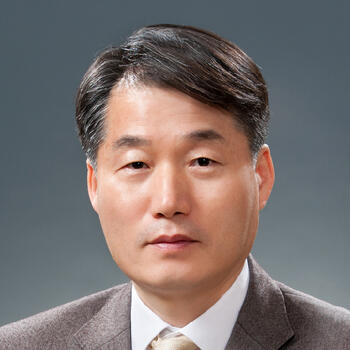As expected, Moon Jae-in has been elected as South Korea’s 19th president. In a five-way contest, Moon garnered 41.1 percent of the vote, with strong support from those in their 20s to 50s, winning most of the regions in the country.
South Koreans’ longing for change had been expressed through the now-famous candlelight demonstrations that lasted for almost twenty consecutive weekends culminating in the impeachment of now former president Park Geun-hye. It was also reflected in the highest voter turnout in two decades, at 77.2 percent.
Just hours after his decisive victory, Moon began his five-year term without the usual practice of a transition team. Moreover, he took office during turbulent times — domestically and internationally — perhaps even more so than when former president Kim Dae-jung took office in 1998 when the nation was struggling with the Asian financial crisis.
First and foremost, Moon must deal with the mounting social and economic challenges that the country is facing. Having entered a period of low-growth coupled with an aging population, the economy confronts a host of difficult issues, including high levels of youth unemployment, income inequality, household debt, elderly poverty and rising social welfare expenditures.
The Moon administration immediately established a ‘job creation committee’ and pledged to create 810,000 jobs in the public sector. But it will not be easy to amass the financial resources needed by a government already struggling with serious budget deficits. Most agree that ‘economic democratisation’ is needed, but the details of how to achieve that — including reforming the chaebol — remain unclear.
Economic uncertainties have been a key factor contributing to social unrest. Words in vogue among South Koreans in their 20s and 30s reflect the social discontent with youth unemployment and inequality that ultimately erupted in the demonstrations.
‘Hell Joseon’ captures a sentiment of what it means to live in South Korea’s hellish reality. ‘Golden Spoons Dirt Spoons’ levels the charge that one’s life course is decided for good by one’s family background. ‘Gapjil’ refers to acts of impunity by the powerful against the weak, while the ‘Sampo generation’ is a generation forced to give up three things: courtship, marriage and children. If Moon fails to live up to the expectations of the country’s youth, a bloc that widely supported him, social discontent and symptoms of unrest will likely return.
Moon also faces daunting tasks in national security matters. North Korea has continued to develop weapons of mass destruction and relations have been all but completely severed. As controversy over the deployment of THAAD (Terminal High Altitude Area Defense) has shown, South Korea remains caught in the middle of a hegemonic struggle between the United States and China.
If that wasn’t enough, South Korea made a deal with Japan on the comfort women issue in late 2015 but the public now demands its renegotiation. South Korean–Russian relations are also at their grimmest. To top it all off, Moon must deal with a formidable set of nationalist and populist leaders — Donald Trump, Xi Jinping, Shinzo Abe, Kim Jong-un and Vladimir Putin — all known for their very strong characters, in stark contrast to Moon’s nice-guy, everyman personality.
The most urgent but also most challenging task is managing inter-Korean relations. As Pyongyang steps up its nuclear and missile programs, Seoul must reaffirm to the international community that it will continue its efforts to denuclearise the North. At the same time, relations between the two Koreas must be improved to strengthen South Korea’s strategic position in the region as well as reduce tensions on the peninsula.
Trump has been sending out confusing messages probably because he has no suitable plan to deal with Pyongyang. As such, if Seoul were to bring to the table a persuasive policy of engagement, Washington would be receptive unless it weakens US efforts towards denuclearisation. Both Beijing (pressured by Washington to solve the North Korean nuclear issue) and Pyongyang (concerned about becoming overly dependent on China) would welcome Seoul taking the initiative to improve inter-Korean relations.
Some pundits at home and abroad worry that the Moon administration might follow in the footsteps of the Roh administration (2003–2008), whose outcomes lagged too far behind its good will to bring about reform. Moon served as Roh’s chief of staff and the two administrations overlap in manpower. But Moon and his team have also learned many lessons from the trial and error of the Roh administration, preparing themselves over the past ten years of conservative rule.
With the new administration in place, political turmoil over the last six months has finally ended. Moon’s first moves as president, including key appointments in the Blue House and opening up communication channels with the public, have been well received. A public poll conducted by Gallup Korea one week after the inauguration showed that 87 percent of the respondents expected him to do well. Despite mounting challenges, South Koreans remain hopeful that their new leader can take the nation to the next level.
This piece was originally carried by East Asia Forum on May 23, 2017, and reposted with permission.


 Kim Jin Pyo
Kim Jin Pyo


